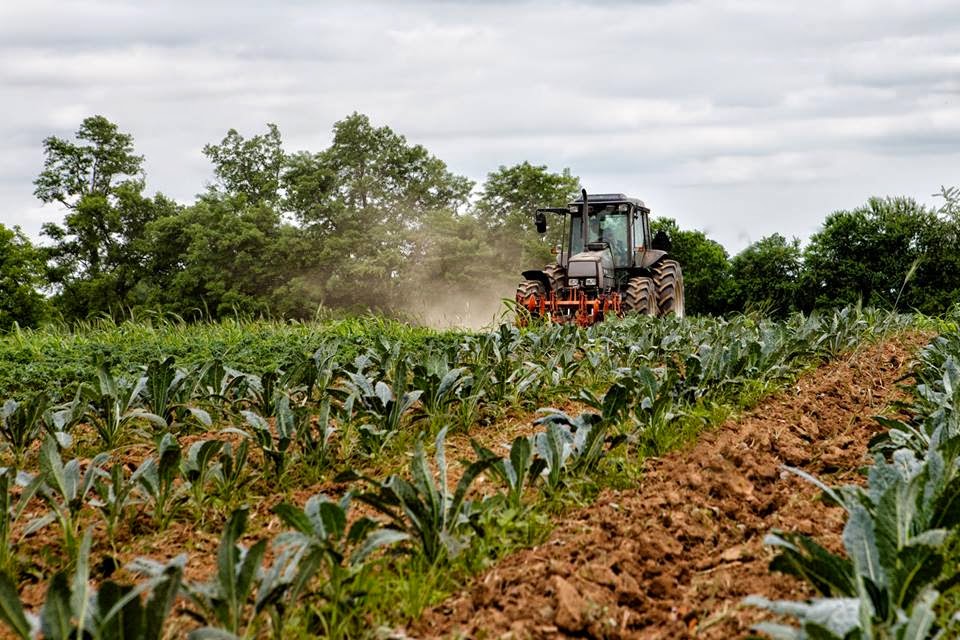Sweet, Sweet Corn
Sweet corn
looks like it would be easy to grow, and it kind of is. But there are lots of
reasons why things might not go well along the way. With several patches
planted for this year’s enjoyment, some will look better than others, but they
will all be awesome on your plate. Corn is a big seed that grows fast, making
it easy to get started and keep the weeds cultivated away around it. That’s the
easy part. As the plant approaches sexual maturity, that’s when things get
interesting—go figure. If you read Elmwood’s enewsletter sent on July 12, I
mentioned that corn is complicated to grow. This newsletter explains why.
Let’s begin
with corn's genetic potential, since so much of what happens is a result of
different varieties' traits. Of the corn you see while you're driving down the
road, 99.99% is varieties grown for maximum yield of dry, hard grain for
livestock feed, ethanol or one of thousands of processed foods or plastics.
(Sometimes it’s hard to know the difference between those finished products.).
The lion's share—about 90%, according to the US Department of Agriculture—is
genetically modified for chemical compatibility with herbicides and
insecticides.
Back in the
day, farmers would pull the immature grain-crop ears, called roasting ears, to
eat fresh. It was so well liked, research and breeding programs were
established to develop corn just for people to enjoy. While selecting for
certain traits, like sweetness, flavor, ear size, etc., sweet corn stormed onto
the scene, and Silver Queen was born. Now there are thousands of sweet-corn
varieties to choose from, even genetically altered ones (but organic is always
non-GMO). Elmwood Stock Farm grows “supersweet” varieties, bred like Silver
Queen, so the sugars do not rapidly convert to starch after picking, but we
also look for good husk coverage to protect the ear from insects and birds,
cold tolerance for early plantings, and flavor.
Enough about
the parents. Pubescence of the maturing crop is where the action is. If you did
not know, or a refresher for long-time CSA members, it always starts with
biology. When the plant reaches sexual maturity, the tassel at the top–the male
part of the flower—sheds millions of pollen grains, which can be airborne for
miles. The female portion of the flower is the ear, with silks that extend into
the air to catch the falling pollen. Each silk is actually a tube that must
catch a pollen grain, then migrate it through to the cob to fertilize the zygote,
forming a kernel. Each kernel has its own silk. If these silks are damaged, a
kernel will not be formed. In a perfect world—or with numerous applications of
highly toxic insecticides or genetic manipulations—every kernel will develop.
Below are some of the things that can disrupt our perfect world.
·
In extremely hot, dry weather, the silks can dry out and shrivel up,
closing off the tube.
·
There are many silk-clipping insects—Japanese beetles, June bugs, corn
rootworms, corn earworms, to name a few. These pests like the fresh, tender
silks, attacking them where they emerge from the husk and effectively cutting
the tube in half so the pollen cannot travel to the awaiting egg. Some insects
emit a pheromone that attracts others, so often you will see upwards of 10
beetles on one ear, with none on the adjoining stalks.
·
Corn earworm larvae and numerous little, black beetles burrow through
the husk to get to the tasty corn morsels once they have formed.
·
Blackbirds may come in droves, pecking through silks to get the sweet,
tender, developing kernels. This not only tatters the tips but opens them up to
aforementioned marauders. We often hang birds-eye balloons on 12- to 15-foot
poles to act as scarecrows and have figured out that Mylar happy-birthday
balloons work just as well.
If that's not
enough, every corn patch must be protected from raccoons, skunks, deer and
coyotes (yes, coyotes) with temporary, electric-net fencing. Otherwise there
would be no corn, not just tattered or insect-damaged corn.
newsletter, there seems to be less
pestilence on our farm after 12 to 15 years of employing organic practices,
including less insect pressure on the silks. We expect some of the harvest will
lack pollination at the tip—a very small portion of the ear, but this year's
second patch, which we're harvesting this week, seems picture perfect, with a
few exceptions.
Whether it is
full to the tip or not, it is the best corn you will ever have access to: free
of pesticide residues; unsupportive of gene-transfer technologies; frustrating
but not harmful to wildlife. This is confirmation that organic farming can be a
perfect world, and it is really sweet to see. —Mac
Stone
In Your Share
Green Beans
Beets
Blackberries
Savoy Cabbage
Sweet Corn
Cucumber
Green Bell Pepper
Potatoes
Summer Squash
Heirloom Tomatoes
Kale Greens
Recipes
Lemony
Green Beans With Almond Breadcrumbs, adapted from The Kitchn
This is a light, healthy take on traditional, heavy
green-bean casserole.
½ c. blanched and slivered almonds
6 T. extra virgin olive oil, divided
1 garlic clove, minced
½ c. breadcrumbs
zest and juice of 1 lemon
2 T. finely chopped flat-leaf parsley
salt & pepper
1 ½ lb. green beans, trimmed
Lightly toast almonds in a skillet over medium
heat. Let cool, then transfer to a food processor and grind to the consistency
of breadcrumbs.
Heat 2 tablespoons of olive oil in a skillet over
medium heat. Add almonds, breadcrumbs, garlic and lemon zest and cook, stirring
constantly, until fragrant and golden. Remove from heat and stir in parsley.
Set aside.
Place lemon juice in a small bowl and slowly whisk
in the remaining olive oil. Season to taste with salt and pepper. Set aside.
Bring a large pot of salted water to a boil. Add
green beans and cook until tender, about 5 minutes. Drain green beans, return
to the pot, and toss with the lemon juice and olive oil vinaigrette.
Arrange green beans on a platter, drizzling with
vinaigrette left at the bottom of the pot. Sprinkle almond and breadcrumb
mixture on top.
Baked Summer Squash Fries, adapted Damn Delicious
4 summer squash, quartered lengthwise
½ c. grated Parmesan
½ tsp. dried thyme
½ tsp. dried oregano
½ tsp. dried basil
¼ tsp. garlic powder
salt & pepper
2 T. olive oil
2 T. chopped fresh parsley leaves
Preheat oven to 350 degrees F. Coat a cooling rack
with nonstick spray and place on a baking sheet; set aside.
In a small bowl, combine Parmesan, thyme, oregano,
basil, garlic powder, salt and pepper, to taste.
Place squash onto prepared baking sheet. Drizzle
with olive oil and sprinkle with seasoning mixture. Bake until tender, about 15
minutes, depending on size of squash. Then broil 2-3 minutes, until crisp and
golden brown.
Serve immediately, garnished with parsley.
Traditional
Gazpacho, adapted from Martha Stewart
Consider this cold soup, because it’s summer, and
not all soups are meant to be eaten hot.
2 c. cubed, crustless, day-old bread
2 garlic cloves
salt & pepper
2 lb. ripe tomatoes, seeded
1 4-in. piece cucumber, peeled and seeded
1 1-in.-thick slice green bell pepper
2 tsp. red-wine vinegar
1 tsp. sherry vinegar
½ c. extra-virgin olive oil
Cover bread with cold water, and let soak for 15
minutes. Meanwhile, cover garlic with water in a small saucepan, and bring to a
boil. Cook for 3 minutes; drain.
Transfer garlic to a blender. Squeeze excess liquid
from bread, and transfer bread to blender. Add 2 teaspoons salt, the tomatoes,
cucumber, bell pepper and vinegars. Pureé until smooth. With machine running,
pour in oil in a slow, steady stream, blending until emulsified. Blend in 1 cup
cold water. Season with salt and pepper. Refrigerate gazpacho until chilled, at
least 3 hours, or up to 1 day.


